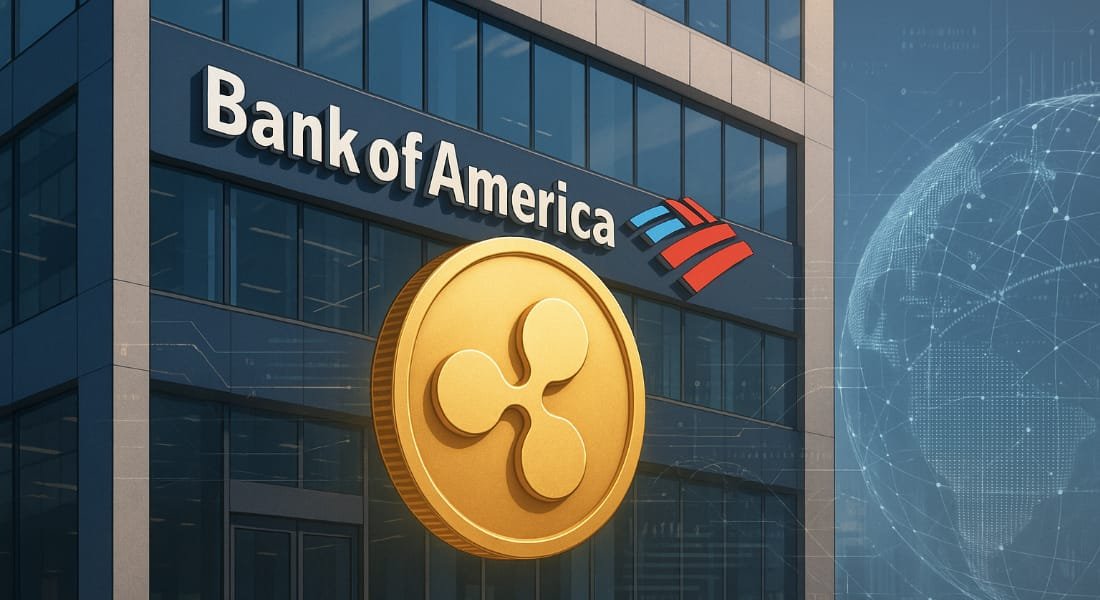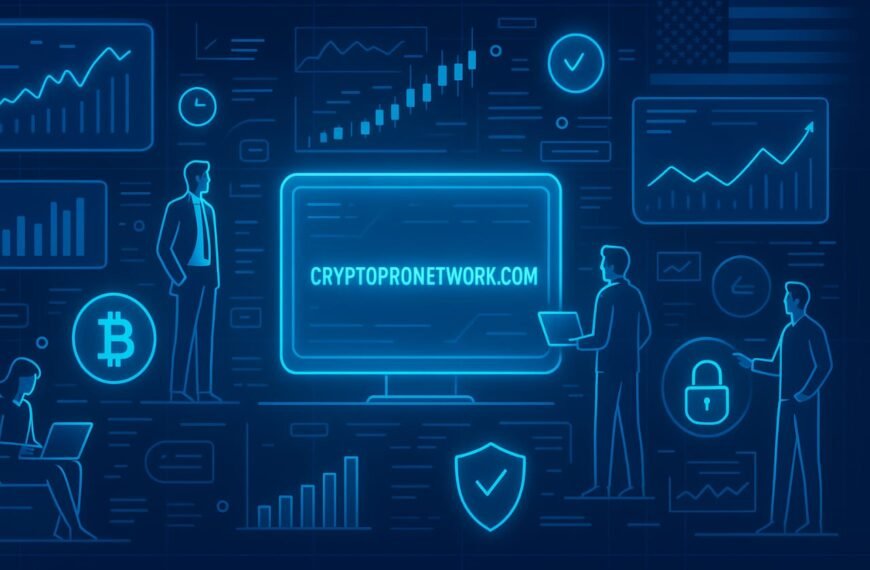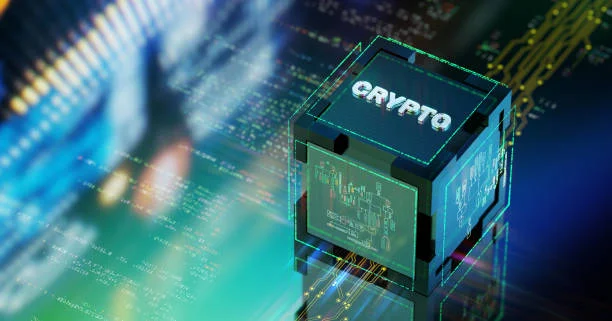In recent headlines one claim has sparked widespread curiosity across the crypto and financial industries: Bank of America reportedly using Ripple’s XRP for internal transactions.
This topic has gained traction following statements from financial experts triggering discussions about the future of blockchain integration in traditional banking.
But what does this mean and how reliable is the information? Let’s explore the facts context and implications of this bold claim.
What Is Ripple’s XRP and How Does It Work?
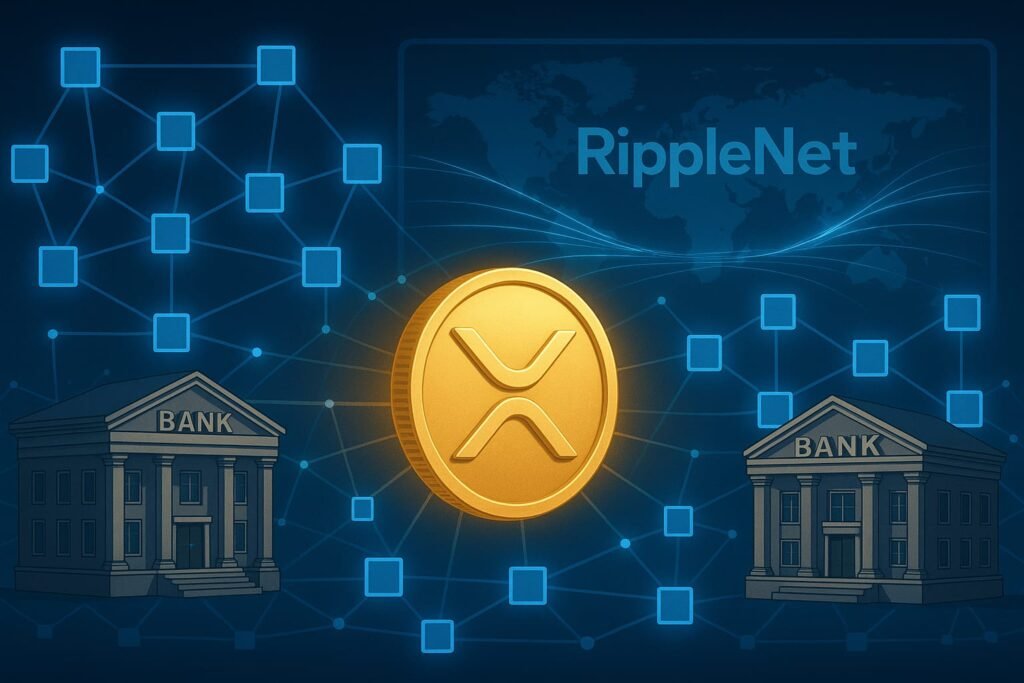
Ripple is a blockchainbased technology company that offers payment solutions to financial institutions. At its core is RippleNet a realtime gross settlement system that facilitates instant international payments.
XRP is the native cryptocurrency of this ecosystem designed to act as a bridge currency and provide liquidity during cross border transactions.
XRP transactions are validated through a consensus protocol rather than traditional mining, making them fast energy efficient and low cost.
Unlike Bitcoin or Ethereum which can take minutes to hours for confirmations XRP transactions settle in seconds.
Bank of America and Ripple: A History of Collaboration
Bank of America is one of the largest and most technologically progressive financial institutions in the world. Over the years, it has expressed interest in blockchain innovation and Ripple has been a part of that journey.
In 2016, BoA joined RippleNet to explore solutions for cross border transactions. In 2017 the bank filed patents mentioning the use of a distributed ledger system resembling Ripple’s.
While these documents didn’t directly cite XRP, they hinted at deepening engagement with blockchain-based financial technology.
Recent statements by David Stryzewski CEO of Sound Planning Group have reignited the debate. He claimed on FOX Business that BoA is using XRP for 100% of its internal transactions.
While the claim remains unverified by BoA or Ripple it has reignited interest in their partnership and the potential role of XRP in the banking sector.
Why This Report Matters: The Importance of XRP Integration
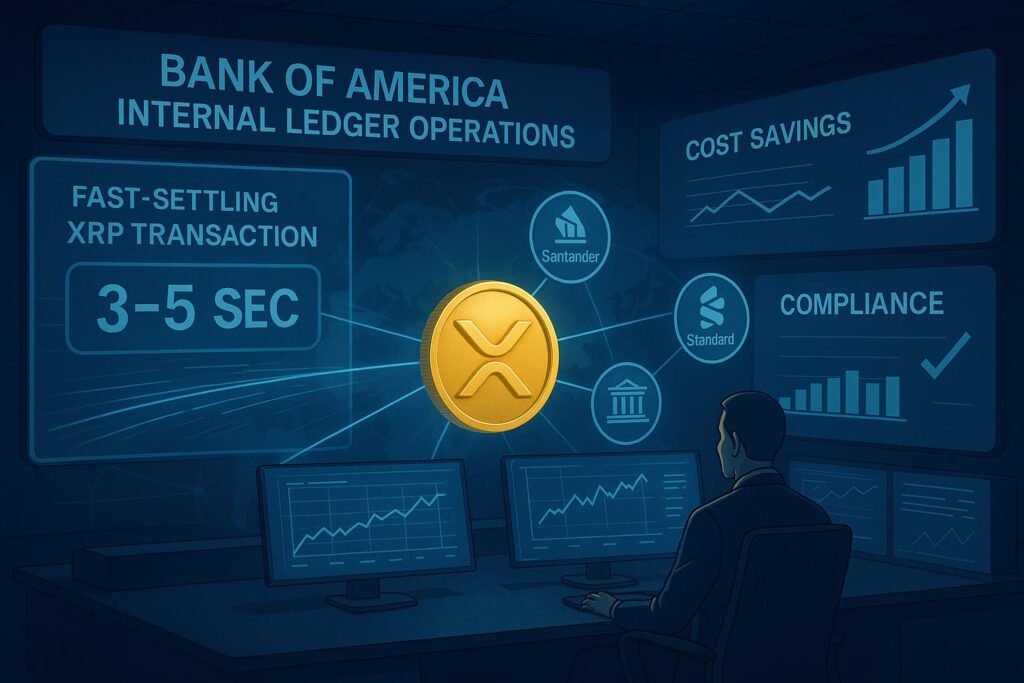
If Bank of America is indeed using Ripple’s XRP internally it signals a massive shift in how traditional banks might integrate blockchain technology. Here’s why this is significant:
Faster Transactions
XRP transactions settle in just 3-5 seconds which could revolutionize the way internal transfers and settlements occur in large banking institutions.
Cost Efficiency
By eliminating intermediaries and using XRP for liquidity transaction costs could be drastically reduced.
Enhanced Transparency and Security
Blockchain records are immutable providing a clear audit trail. This transparency is invaluable for regulatory compliance and internal auditing.
Competitive Advantage
Early adoption of advanced fintech solutions like XRP gives BoA a potential edge over competitors in the evolving digital banking space.
Alignment With Global Trends
With institutions like Santander and Standard Chartered already leveraging RippleNet BoA’s rumored integration aligns with global banking trends.
How XRP Could Be Used Internally at Bank of America
If we assume the claim is accurate, there are several ways BoA might be using XRP internally. These potential use cases not only highlight how versatile the token is but also demonstrate how it could fit within the broader operational structure of a major financial institution like Bank of America.
While the specific details remain speculative the following applications show how XRP could streamline processes reduce costs and set the stage for future innovations:
Liquidity Management
XRP could be used to facilitate liquidity transfers between branches or regional offices especially in different countries.
Settlement Layer
BoA might be using XRP to internally settle transactions more quickly than traditional interbank systems.
Expense Reconciliation
For global operations using XRP to reconcile and convert currencies could simplify accounting processes.
Testing for Future Public Use
BoA might be piloting XRP internally before offering crypto related services to customers such as XRP based remittances or payments.
Additionally, if Bank of America reportedly using Ripple’s XRP for internal transactions proves accurate, it would signal a powerful shift toward institutional crypto adoption.
A Step by Step Guide to Understanding How Bank of America Reportedly Using Ripple’s XRP for Internal Transactions
Understanding the evolving relationship between Bank of America and Ripple requires looking at key milestones and developments over time.
Each step in their collaboration offers insights into how traditional finance is slowly incorporating blockchain solutions.
While many details remain confidential the following sequence outlines what we know so far:
RippleNet Membership
BoA joined RippleNet as part of its innovation lab for cross-border payments.
Pilot Testing and Trials
Over the years, Ripple confirmed BoA participated in several pilot projects involving their technology.
Public Appearances and Quotes
BoA representatives have praised Ripple’s technology public especially during Ripple’s Swell conferences.
The Patent Trail
BoA has filed numerous patents referring to blockchain and distributed ledger systems, some resembling Ripple’s architecture.
The Unverified Claim
The latest claim from Stryzewski adds to the narrative but remains unconfirmed by either party.
Industry Implications
Whether the claim is true or not, it highlights the growing role of blockchain in banking. And if Bank of America reportedly using Ripple’s XRP for internal transactions becomes publicly confirmed it will set a powerful precedent for the entire industry.
Key Challenges and Considerations
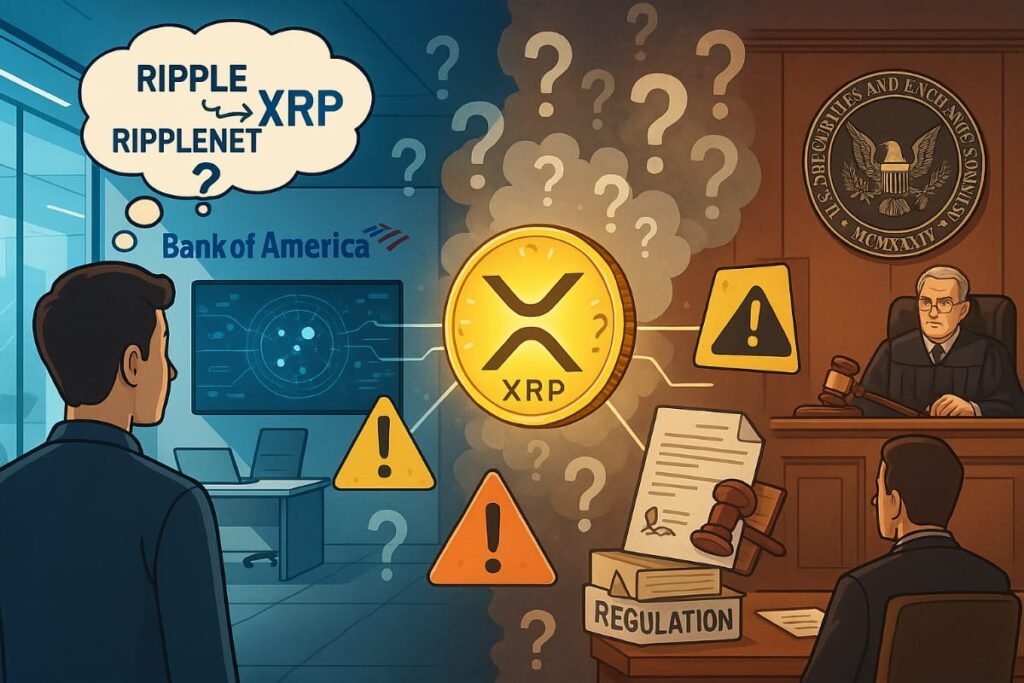
Despite the promising possibilities, there are notable challenges that could influence the practical use of XRP by Bank of America or similar institutions.
These include legal complexities, public confusion, and the internal vs. external applicability of such technologies.
Understanding these factors is essential before drawing conclusions about the full scale implementation of XRP.
Regulatory Hurdles
The U.S. SEC’s lawsuit against Ripple has complicated XRP’s regulatory status. This legal uncertainty makes widespread adoption in U.S. banks more challenging.
Public Misunderstanding
Many people confuse Ripple RippleNet and XRP. Using RippleNet doesn’t always mean using XRP. This distinction is crucial.
Internal & External Use
Even if BoA uses XRP internally, this doesn’t imply customer facing services involve the token.
Conclusion
The claim that Bank of America reportedly using Ripple’s XRP for internal transactions is intriguing and potentially groundbreaking.
However without official confirmation it remains a topic of speculation. What is undeniable is the increasing interest and investment by major banks in blockchain solutions.
BoA’s historical engagement with Ripple coupled with its patent filings and RippleNet membership, make the claim plausible but not yet provable.
Regardless the conversation underscores the momentum behind blockchain adoption in traditional finance.
As regulations become clearer and technology matures we may soon see definitive moves from BoA and other major institutions in this direction.
FAQs
What is Ripple’s XRP?
Ripple’s XRP is a cryptocurrency designed to facilitate fast and low cost cross border transactions using blockchain technology.
Is there proof that Bank of America uses XRP?
There is no official confirmation from BoA or Ripple that XRP is being used for all internal transactions. The claim remains speculative.
What is the difference between Ripple, RippleNet, and XRP?
Ripple is the company. RippleNet is its payment network. XRP is the digital token used optionally within RippleNet.
Has BoA ever partnered with Ripple?
Yes, BoA has been part of RippleNet since at least 2016 and has participated in pilot testing Ripple’s technologies.
Could XRP be used for internal banking transactions?
Yes, in theory, XRP could be used to improve speed, reduce costs, and enhance transparency in internal banking operations.
Why is this claim important?
If true, it shows that major banks are not just experimenting but actively using blockchain technologies like XRP signaling broader adoption in traditional finance.

